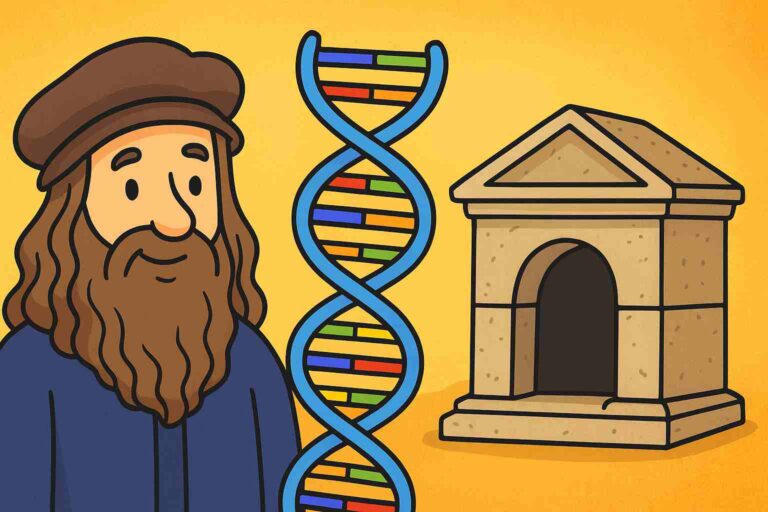
What if walking on two legs didn’t start on the ground? What if it began… up in the trees? 🌳
Scientists have just uncovered an exciting new clue about how early humans learned to walk on two legs—and it might surprise you!
In a faraway place in Tanzania called Issa Valley, chimpanzees live in a hot, dry land full of scattered trees. You might think they’d walk on the ground a lot—after all, there aren’t many trees, right? But guess what? These clever chimps still spend a lot of time climbing trees to grab tasty fruits and leaves!
So why does this matter to us? Well, scientists believe that our ancient relatives—early humans called hominins—may have learned to walk upright not just on the ground, but also while balancing in the treetops!
🌴 Life in a Dry Tree-Land
The Issa Valley has two kinds of places:
- Thick forests near rivers
- Dry woodlands with fewer trees
During the dry season, the chimps move more into the dry woodlands. But even there, they don’t stop climbing! They go up into big trees to get delicious fruits, leaves, and even flowers growing at the tippy-top branches.
To reach those treats, chimpanzees have to be really good climbers. And here’s the coolest part: when the branches get thin and bendy, chimps often stand upright, using their hands to hold onto nearby branches for balance. Kinda like how we walk!
🧠 What Does This Tell Us About Early Humans?
For many years, scientists thought early humans started walking upright because they had to travel across open land. But this new study shows that tree-climbing might have played a big role too.
If our chimp cousins walk upright in trees to stay safe and get food, maybe our ancient ancestors did the same! It could mean that walking on two legs began in the branches—before we became full-time ground walkers.
Imagine learning to balance like a gymnast on wobbly tree branches. That takes some serious skill—and that’s what helped shape how we walk today!
🔍 What’s Next?
This research only looked at dry season behavior, so scientists want to study chimpanzees in the wet season too. They also want to check if other chimpanzee groups in different places behave the same way.
Every time we learn more about chimpanzees, we get a little closer to understanding how humans became… well, human!
🤔 DID YOU KNOW?
Gibbons and orangutans also walk upright—in trees!
They swing through the forest and sometimes walk on two legs while holding branches for balance—just like early humans might have done!
🧠 QUIZ TIME!
Let’s see what you learned! (Answers at the bottom ↓)
1. Where do the chimpanzees in this study live?
A. Sahara Desert
B. Amazon Rainforest
C. Issa Valley, Tanzania
D. New York City
2. What food do the chimps mostly climb trees to get?
A. Insects
B. Fruit
C. Meat
D. Water
3. Why do chimpanzees sometimes stand upright in trees?
A. To show off
B. To fly
C. To balance and reach food safely
D. To sleep better
4. What do scientists believe about early human walking?
A. It started in water
B. It began in treetops
C. It happened only on the ground
D. It was invented by aliens
5. What season did scientists study the chimps in?
A. Winter
B. Rainy season
C. Dry season
D. Summer only
✅ ANSWERS:
- C 2. B 3. C 4. B 5. C






